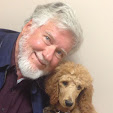I’ve been working with a group that I refer to as “The Think Tank.” They are smart, smart people who work in the museum field and serve from time to time as consultants in our charette program. We are working on a field we call Visitor-Centered Thinking. We took our cue from the superb training video from Conner Prairie Living History Museum. Its title is “Opening Doors to Great Guest Experiences.
We have all pledged to try to develop experiential, interactive learning experiences within our own institutions. We have pledged to up the ante of visitor-centered thinking in our own place so that we can be simpatico when we teach these things to others.
One of our people—shall I call them “tankers?”—operates a house museum. He and the corps of volunteer docents have been trying visitor-centered techniques. The results are remarkable!
First, the volunteers have felt liberated from the sense of duty to “tell the entire story, all of it, all the time.” Since none of them knew the entire story, or even a smidgeon of what their Director knew, they engaged visitors with a sense of inadequacy. Yet they strove on, trying to say as much as possible in whatever time was available. Does this sound exhausting?
Of course it does. And yet this is the imaginary job description of the volunteer docent at so many museums. “You have to allow 90 minutes,” they say, “or you’ll miss part of the story of our county.” Most people (I) don’t mind missing a huge chunk of that story. What we want to do is poke around. We would love to be introduced to a few, a very few, things during our visit, and if we like the experience, maybe we’ll prolong our visit. How does that sound?
The docents at the house museum I’ve mentioned tried a different approach. After welcoming the visitors, they allowed them “free range” roaming for a few minutes and they surreptitiously observed what the visitors seemed interested in. Then they reentered the room and struck up, not a monologue, but an actual conversation.
“How did you hear about our museum; what brings you here?” That’s a good place to start. “Do you collect antiques?” There are so many ways to go. With clues from the visitor, the docents take people here and there in the museum, making sure to do no more than fifty per cent of the talking. The volunteers are encouraged to mention facts or objects that they find interesting. They are not obliged to bring up anything they don’t know, don’t understand, or don’t find interesting. This has changed the life of the volunteers!
Before trying visitor-centered techniques, volunteers would typically spend “down time” at the museum with the novel they brought with them. Now that seldom happens. They are conversing about what they’ve tried with the visitors and what they’ve figured out how to do better. Or they are in the archive doing research on something that caught their interest. Or they are asking the Director something the Director never considered. Volunteers have been transformed from human recorded messages into interesting people to spend time with.
And what about the visitors? The visitors are leaving more money in the crystal bowl near the door, and they are spending more in the gift shop.
I heard a related story from Carl Morgan at the Morgan County Museum last November. A visitor was shocked to hear that the admission charge was $5. Carl said, “tell you what…I’ll give you a tour and when it’s over you can pay whatever you think it was worth.” The visitor left $20. Knowing Carl, I’m not surprised.
During a charette in the Clay County Museum a few months ago, I asked the trustees to comment on one object in the museum for which they felt particular interest. One man said he was intrigued by a loyalty oath local people had to take during the Civil War. He said he always wondered what meaning that oath had for those who took it. Did they really mean it?
I was moved by the simple eloquence of that volunteer’s personal expression of meaning. I realized that “most people” must surely respond on a personal level when given permission to “be real” in the museum. If the guide is “real,” it must be acceptable to respond in kind.
This is actually one of the truths of the field of history. It is an inherently social field. Stories are researched and written or told not into outer space but into an imaginary community of other people. But we must give things the time they deserve. If a person enters our space, we should not impose a 90-minute recitation on her. She doesn't deserve such a cruel and unusual welcome. Visitors deserve some warmth, and a touch of the personal as we take them into our story, which is the story of great human interest, if only we will take the time to release it that way. We always have a choice, of course. We can release a lot of hot air, or we can release a creative experience of mutual learning. It’s person-to-person when it works well. Why let it be any other way?
Subscribe to:
Post Comments (Atom)




No comments:
Post a Comment